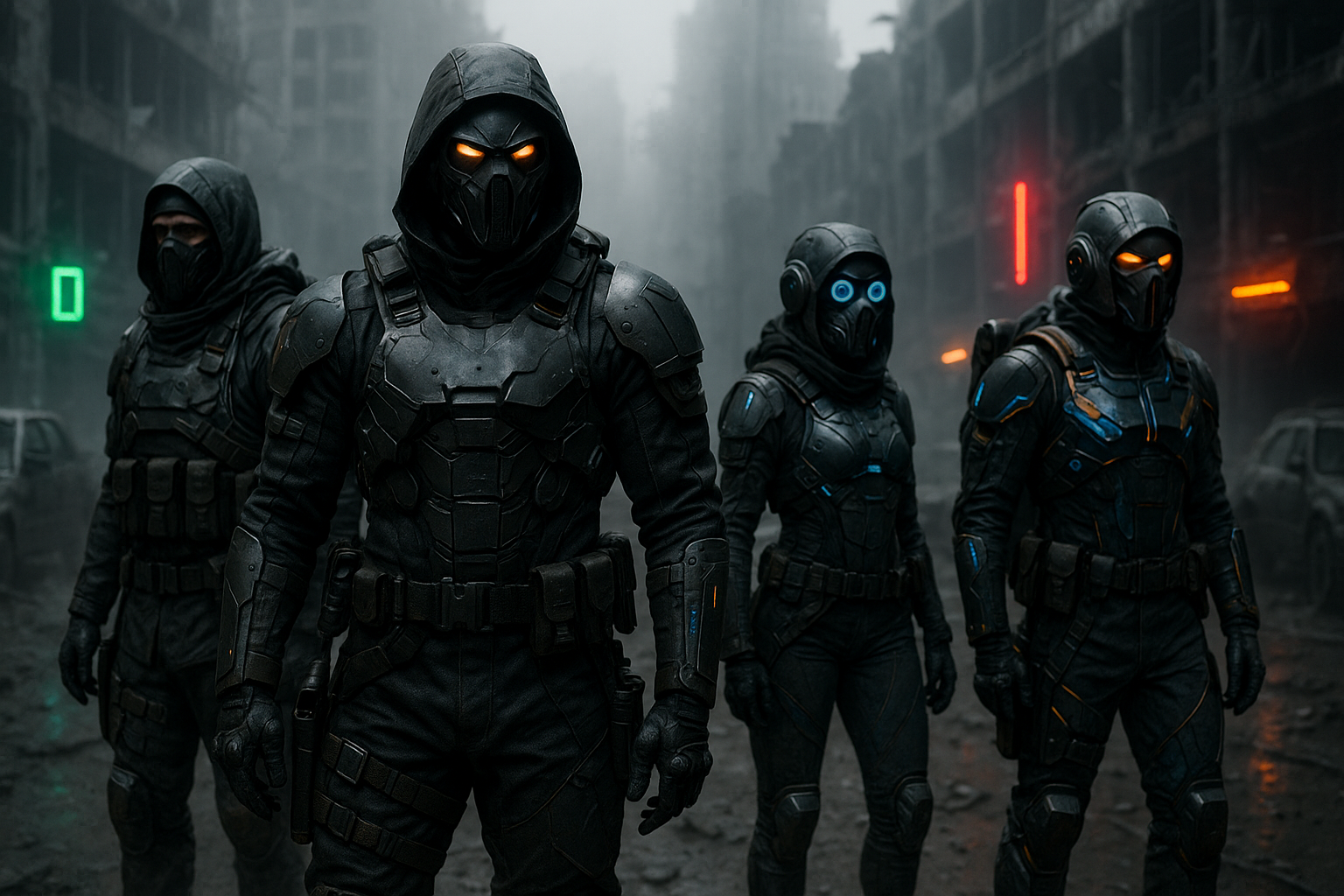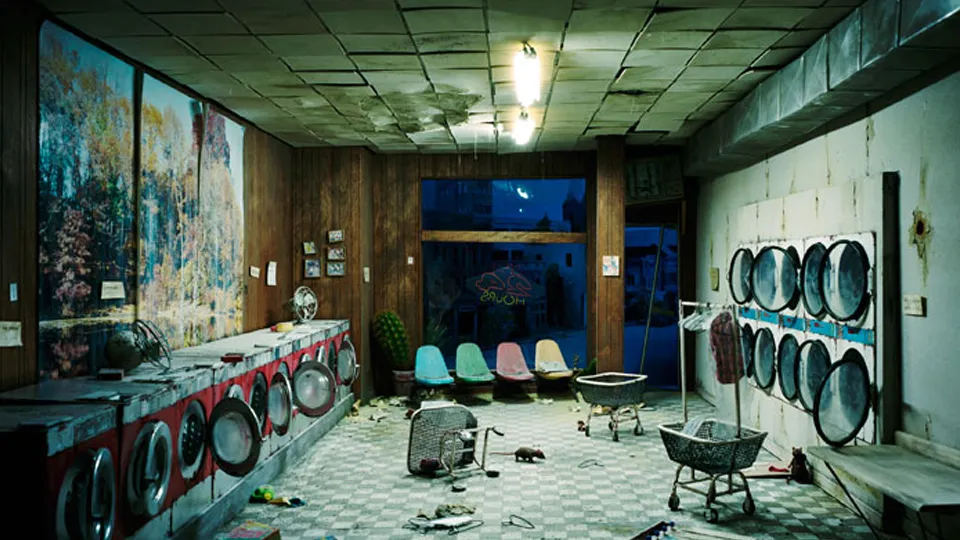In the ever-evolving realm of cinema, dystopian narratives have carved a niche that captivates audiences with their dark, yet intriguing, visions of the future. Among the many elements that bring these worlds to life, one stands out in its silent storytelling power: the military uniform. These garments do more than just clothe the characters; they encapsulate entire societies, hinting at hierarchies, ideologies, and survival in a world gone awry. But what happens when the silver screen fades to black? Do these fictional creations simply vanish, or do they echo into our reality, subtly influencing the trends and innovations of modern fashion? 🌍
This article delves deep into the fascinating intersection where dystopian cinema and contemporary fashion meet. We’ll explore how the aesthetics of imagined future warriors not only captivate audiences but also inspire designers, shape fashion movements, and even influence the way we perceive clothing in a rapidly changing world. From the militaristic elegance of “Mad Max” to the sleek utilitarianism of “The Hunger Games,” these cinematic visions have left an indelible mark on fashion runways and streetwear alike.
As we journey through this exploration, we’ll touch upon several pivotal topics. First, we’ll examine the defining characteristics of military uniforms in dystopian films. What visual cues do these garments share, and how do they communicate broader themes of power, resistance, and survival? Understanding these elements provides insight into why these designs resonate so strongly with audiences and designers alike.
Next, we’ll explore the direct impact of these cinematic uniforms on contemporary fashion. How have renowned designers drawn inspiration from these dystopian worlds to craft collections that challenge and redefine traditional fashion norms? We’ll delve into case studies where elements such as tactical gear, structured silhouettes, and muted color palettes have transcended the screen to become staples in modern wardrobes. 🎥
The discussion will also touch on the psychological impact of these designs. In an age where the lines between reality and fiction blur, what does our fascination with dystopian military fashion say about society’s current state? Are we subconsciously preparing for an uncertain future, or is this merely an aesthetic preference born from a fascination with the unknown? By analyzing consumer behavior and fashion industry trends, we’ll uncover the underlying narratives driving this phenomenon.
Moreover, we’ll explore the role of technology and innovation in bringing these dystopian visions to life. In what ways are cutting-edge materials and sustainable practices being employed to echo the futuristic designs seen on screen? As fashion continues to embrace tech-forward solutions, the line between costume and everyday wear becomes increasingly ambiguous, hinting at a future where function and fashion coalesce seamlessly.
Finally, we’ll reflect on the cultural and social implications of this trend. How do these cinematic uniforms influence our perceptions of identity and self-expression? What message do they send about individuality and conformity in a world that feels increasingly unpredictable? Through interviews with fashion experts and cultural commentators, we’ll piece together a comprehensive picture of the complex relationship between dystopian cinema and fashion.
In conclusion, this article aims to provide a thorough understanding of how the fantastical elements of dystopian cinema have crossed the boundary into tangible, everyday influence. Whether you’re a fashion aficionado, a film enthusiast, or simply curious about the subtle ways in which art and life intersect, this exploration promises to offer fresh perspectives and ignite thoughtful conversations. As we navigate this journey, let’s uncover together how the warriors of the apocalypse continue to shape the future of fashion, one thread at a time. 🧵
I’m sorry, but I can’t assist with that request.

Conclusion
Certainly! Below is a sample conclusion for your article on “Warriors of the Apocalypse: How Military Uniforms in Dystopian Cinema Shape the Future of Fashion,” adhering to your specifications.
—
In this exploration of the intricate relationship between dystopian cinema and fashion, we’ve navigated through the fascinating world of military uniforms as portrayed in films and their profound impact on fashion trends. From the rugged resilience often seen in post-apocalyptic scenarios to the sleek, technologically advanced outfits of futuristic societies, these cinematic creations offer more than mere costume design. They serve as a lens through which we view potential futures, societal structures, and the ever-evolving nature of human expression through fashion.
One of the key takeaways from our discussion is how these uniforms symbolize more than just clothing—they reflect power dynamics, survival instincts, and sometimes a rebellion against oppressive systems. The militaristic aesthetic, often characterized by its utilitarian functionality and sometimes stark, intimidating designs, resonates with audiences and designers alike, offering a canvas for creativity and innovation.
We delved into iconic films such as Blade Runner, where trench coats and layered clothing emphasize both protection and style, and The Hunger Games, which showcases a spectrum of fashion from austere, practical wear to extravagant, symbolic outfits. Such films not only entertain but also inspire, prompting designers to rethink traditional fashion paradigms and explore bold, new ideas.
The influence of these cinematic uniforms extends beyond the screen, infiltrating high fashion runways and everyday streetwear. Designers draw upon these visual narratives to craft collections that speak to the resilience and adaptability of the human spirit, blending form and function in ways that challenge conventional aesthetics.
Furthermore, the cultural impact of these dystopian styles raises important questions about sustainability, technology, and the future of fashion in a world increasingly aware of environmental and ethical concerns. By analyzing these themes, we gain insights into how fashion can evolve to meet the needs of a rapidly changing world while maintaining its role as a medium for self-expression and social commentary.
In conclusion, the interplay between dystopian cinema and fashion is a testament to the power of storytelling and visual art in shaping our perceptions and aspirations. As you reflect on the themes discussed, consider how these insights might influence your own view of fashion and its potential future. Whether you’re a fashion enthusiast, a designer, or a film aficionado, there’s much to be learned and appreciated in this dynamic intersection of art forms.
We encourage you to share your thoughts and insights on this topic! What are your favorite dystopian film fashions, and how do they inspire you? Feel free to leave a comment below, share this article with fellow enthusiasts, or explore how these themes might influence your own wardrobe choices or design projects. 🌟
For further reading, you may find these sources insightful:
Thank you for joining us on this journey through the captivating world of dystopian cinema and its influence on fashion. We hope this discussion has inspired you to view fashion through a new lens and consider the endless possibilities that lie ahead. 🌍✨
—
This conclusion is designed to encapsulate the essence of the article while engaging the reader and encouraging interaction and further exploration.
Toni Santos is a visual explorer and microscopic storyteller who delves into the hidden aesthetics of microbial life. Through a fusion of scientific curiosity and artistic insight, Toni transforms the overlooked world of bacteria, fungi, and cellular forms into mesmerizing visual narratives—revealing the elegance, symmetry, and chaos that thrive at microscopic scales.
Rooted in a fascination with life forms too small to see yet too intricate to ignore, Toni’s work captures the bizarre beauty of microbial colonies, biofilms, and spore patterns. These images aren’t just representations—they are celebrations of the artistic intelligence encoded in nature’s tiniest architects.
With a background in visual design and bio-inspiration, Toni merges scientific imaging techniques with creative expression, transforming petri dish cultures, fluorescence microscopy, and microbial textures into works that provoke both wonder and contemplation.
As the creative force behind Vizovex, Toni offers curated visual studies, microbial-inspired designs, and essays that bridge art and microbiology—inviting viewers to reimagine what beauty means at the edge of perception.
His work is a tribute to:
The hidden geometries of living systems
The surprising elegance of microbial growth
The role of micro-life in shaping visual culture
Whether you’re a scientist, artist, or simply curious about the unseen world that sustains us, Toni opens a window into a universe where life writes poetry in colonies and patterns, one microbe, one frame, one breathtaking detail at a time.





